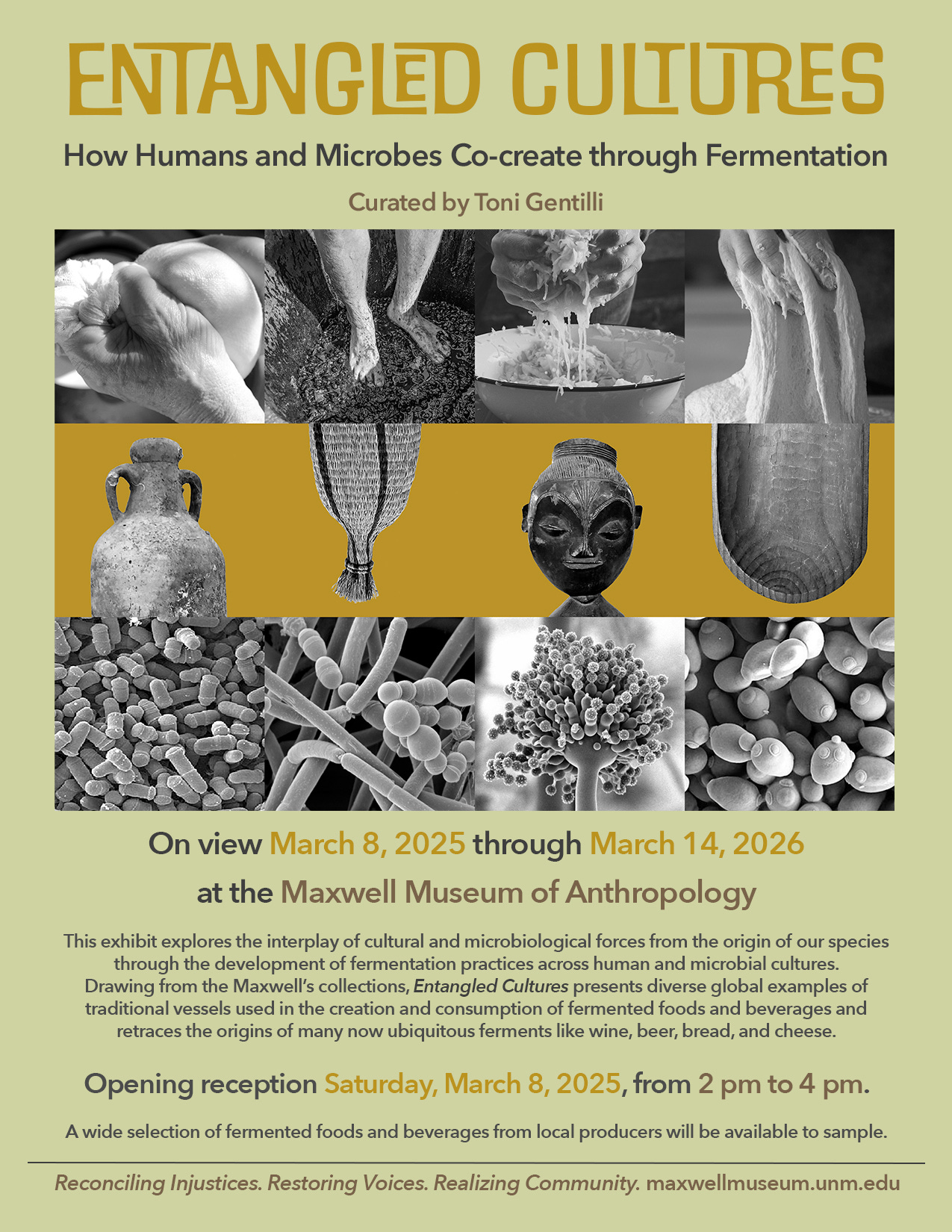Entangled Cultures and the Meditative Process of Fermentation with Sourdough
Exhibition Announcement and a Basic Sourdough Recipe
I am pleased to announce my participation in Entangled Cultures: How Humans and Microbes Co-create through Fermentation, an upcoming exhibition at the Maxwell Museum of Anthropology in Albuquerque, New Mexico. This exhibit explores the interplay between human culture and microbial life through the art and science of fermentation.
On view: March 8, 2025 – March 14, 2026
Location: Maxwell Museum of Anthropology
Opening Reception: Saturday, March 8, 2025, from 2 to 4 p.m.
As part of the exhibition, I will present a video showcasing the process of making sourdough, highlighting the transformation of simple ingredients through fermentation. The exhibition presents diverse global examples of fermentation practices, emphasizing their role in shaping traditions, flavors, and history. The opening reception will feature a selection of fermented foods and beverages from local producers. I will not be attending the opening in the flesh, but you can view the video I created below and attend the opening if you are in the area.
With this announcement, I’m eager to share a beginner-friendly sourdough recipe I use weekly. You can find the full recipe and step-by-step process here. This is the same recipe I demonstrate in my video. Once you’ve mastered this technique, I recommend exploring Maurizio’s recipes at The Perfect Loaf. His methods are more advanced and well worth trying.
In my Gluten-Free Sourdough Boule Tutorial, I delved into the history of sourdough, but I didn’t touch on the benefits of traditionally made sourdough using organic wheat flour. Many believe sourdough bread has less gluten than other breads, though it’s not quite that simple. The magic lies in the fermentation process. Wild yeast and lactic acid bacteria in the sourdough starter work together to break down some of the gluten proteins through a process called hydrolysis. This involves enzymes, such as proteases, produced by the microorganisms. The slow, extended fermentation—often spanning 12 to 24 hours—allows these enzymes to gradually split gluten strands into smaller peptides and amino acids. Research suggests this can reduce intact gluten by 30-50% in some cases, depending on the flour and fermentation conditions. While it’s not gluten-free, this partial breakdown can improve digestibility, making sourdough gentler on the stomach. As a result, it’s often better tolerated by those sensitive to gluten or individuals easing gluten back into their diets.
I hope you enjoy trying this recipe, and if you’re near Albuquerque, consider stopping by the exhibition.
Take care,
Annie
https://littlespoonfarm.com/sourdough-bread-recipe-beginners-guide/
https://www.theperfectloaf.com/
https://thebreadlab.wsu.edu/
https://maxwellmuseum.unm.edu/news-events/event/opening-reception-entangled-cultures-exhibit
“Sourdough Bread Made from Wheat and Nontoxic Flours and Started with Selected Lactobacilli Is Tolerated in Celiac Sprue Patients” (2008, Applied and Environmental Microbiology).
“Highly Efficient Gluten Degradation by Lactobacilli and Fungal Proteases During Food Processing” (2010, Journal of Agricultural and Food Chemistry).




